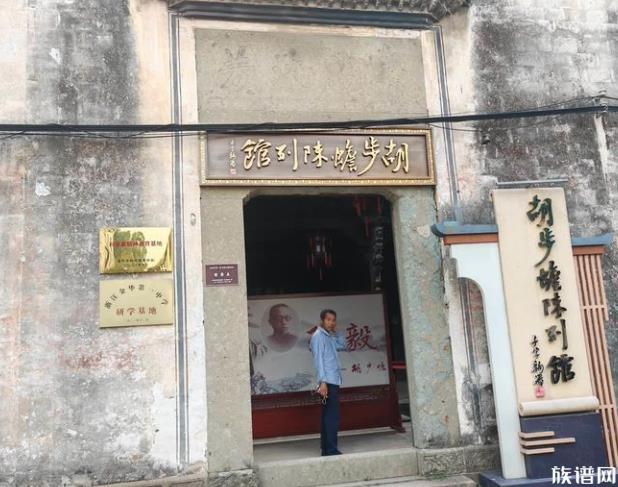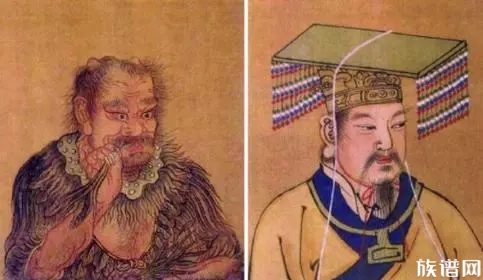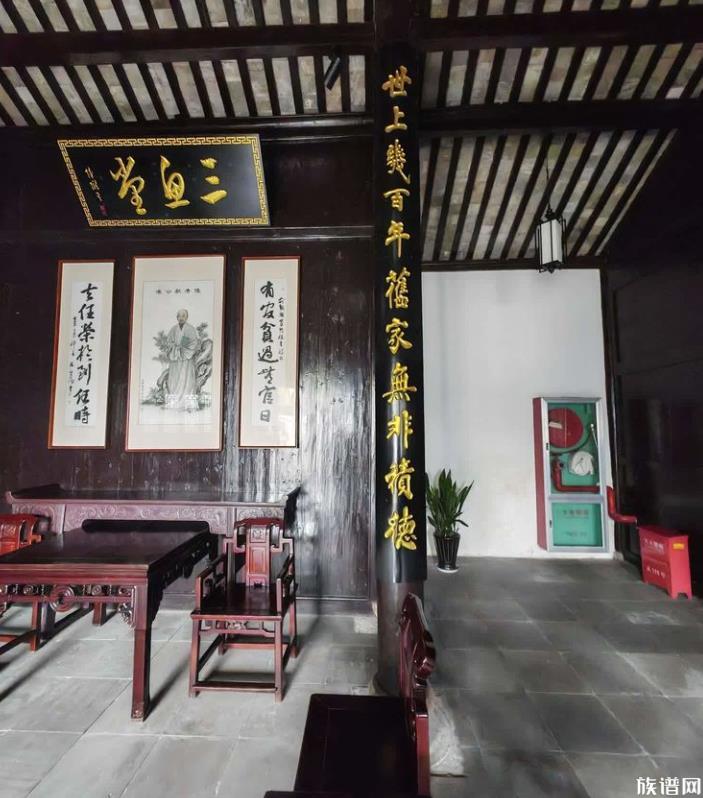



心瓣
房室瓣
分隔心房和心室的血液,封锁心脏外向内的血流。
左方:
右方:
半月瓣
分隔心脏外内血液的心瓣,因为呈半月形而得其名,有三块胶,向准心室的方向作封锁。
左方:
右方:
腱索
三尖瓣和二尖瓣皆由强韧的 腱索 ( 英语 : Chordae tendinae ) 所固定,以免瓣叶被血液在 心脏收缩 ( 英语 : Systole (medicine) ) 时所产生的强大液压迫开。腱索由尖瓣连接至心室的内壁的 乳头状肌 ( 英语 : Papillary muscle ) 之上。腱索的功能不良的话,会导致血液错误倒流,大大减低氧气和养份的轮送。
心跳声
心脏跳动时的“噗通”声(又作“呯呯”、“答立”)是由于 心舒 ( 英语 : Diastole ) 或心缩时血液猛烈向心瓣回冲而发出的声音。“噗”的较大的一声是三尖瓣和二尖瓣闭紧时的声音,“通”的较小的一声则是两组半月瓣闭紧时的声音。故此,“噗通”是与心脏的跳动同步。当心脏处于舒张时,血液会流入左右心室。当心脏收缩时,血液会由左右心室分别经主动脉和肺动脉泵往全身和肺部,当血液泵出时,左右心房(或称心耳)底部的三尖瓣和二尖瓣会关闭,以防止血液倒流往心房。而第一下心跳声便是血液冲击二/三尖瓣时所发出的声音。而当血液流出左右心室后,血液会流出主动脉和肺动脉,之后心脏会再次舒张,血液便会从主动脉和肺动脉内倒流回心脏。此时,位于主动脉和肺动脉内的半月瓣便会闭关,以防止血液倒流回心室,血液冲击半月瓣,会产生第二次心跳声。
一些未翻译的非现代汉语已进行隐藏,欢迎参与翻译。构造 流经瓣膜的血流。The heart valves and the chambers are lined with endocardium. Heart valves separate the atria from the ventricles, or the ventricles from a blood vessel. Heart valves are situated around the fibrous rings of the cardiac skeleton. The valves incorporate leaflets or cusps , which are pushed open to allow blood flow and which then close together to seal and prevent backflow. The mitral valve has two cusps, whereas the others have three. There are nodules at the tips of the cusps that make the seal tighter.The pulmonary valve has left, right, and anterior cusps. The aortic valve has left, right, and posterior cusps. The tricuspid valve has anterior, posterior, and septal cusps; and the mitral valve has just anterior and posterior cusps.房室瓣 右:由心尖(顶部)看二尖瓣的3D图,图中已移除心室顶部部分构造,以得到二尖瓣的清楚影像。但由于影像处理问题,三尖瓣和主动慢瓣看不清楚;肺动脉瓣在图中看不到。 左:2D的三尖瓣和二尖瓣(上图)以及主动脉瓣(下图)These are the mitral and tricuspid valves, which are situated between the atria and the ventricles and prevent backflow from the ventricles into the atria during systole. They are anchored to the walls of the ventricles by chordae tendineae, which prevent the valves from inverting.The chordae tendineae are attached to papillary muscles that cause tension to better hold the valve. Together, the papillary muscles and the chordae tendineae are known as the subvalvular apparatus. The function of the subvalvular apparatus is to keep the valves from prolapsing into the atria when they close. The subvalvular apparatus has no effect on the opening and closure of the valves, however, which is caused entirely by the pressure gradient across the valve. The peculiar insertion of chords on the leaflet free margin, however, provides systolic stress sharing between chords according to their different thickness. The closure of the AV valves is heard as lub , the first heart sound (S1). The closure of the SL valves is heard as dub , the second heart sound (S2).The mitral valve is also called the bicuspid valve because it contains two leaflets or cusps. The mitral valve gets its name from the resemblance to a bishop"smitre(a type of hat). It is on the left side of the heart and allows the blood to flow from the left atrium into the left ventricle.During diastole, a normally-functioning mitral valve opens as a result of increased pressure from the left atrium as it fills with blood (preloading). As atrial pressure increases above that of the left ventricle, the mitral valve opens. Opening facilitates the passive flow of blood into the left ventricle. Diastole ends with atrial contraction, which ejects the final 20% of blood that is transferred from the left atrium to the left ventricle. This amount of blood is known as the end diastolic volume (EDV), and the mitral valve closes at the end of atrial contraction to prevent a reversal of blood flow.The tricuspid valve has three leaflets or cusps and is on the right side of the heart. It is between the right atrium and the right ventricle, and stops the backflow of blood between the two.Semilunar valves The aortic and pulmonary valves are located at the base of the aorta and the pulmonary trunk respectively. These are also called the "semilunar valves". These two arteries receive blood from the ventricles and their semilunar valves permit blood to be forced into the arteries, and prevent backflow from the arteries into the ventricles. These valves do not have chordae tendineae, and are more similar to the valves in veins than they are to the atrioventricular valves. The closure of the semilunar valves causes the second heart sound.The aortic valve, which has three cusps, lies between the left ventricle and the aorta. During ventricular systole, pressure rises in the left ventricle and when it is greater than the pressure in the aorta, the aortic valve opens, allowing blood to exit the left ventricle into the aorta. When ventricular systole ends, pressure in the left ventricle rapidly drops and the pressure in the aorta forces aortic valve to close. The closure of the aortic valve contributes the A2 component of the second heart sound.The pulmonary valve (sometimes referred to as the pulmonic valve) lies between the right ventricle and the pulmonary artery, and has three cusps. Similar to the aortic valve, the pulmonary valve opens in ventricular systole, when the pressure in the right ventricle rises above the pressure in the pulmonary artery. At the end of ventricular systole, when the pressure in the right ventricle falls rapidly, the pressure in the pulmonary artery will close the pulmonary valve. The closure of the pulmonary valve contributes the P2 component of the second heart sound. The right heart is a low-pressure system, so the P2 component of the second heart sound is usually softer than the A2 component of the second heart sound. However, it is physiologically normal in some young people to hear both components separated during inhalation.Development In the developing heart, the valves between the atria and ventricles, the bicuspid and the tricuspid valves, develop on either side of the atrioventricular canals. The upward extension of the bases of the ventricles causes the canal to become invaginated into the ventricle cavities. The invaginated margins form the rudiments of the lateral cusps of the AV valves. The middle and septal cusps develop from the downward extension of the septum intermedium.The semilunar valves (the pulmonary and aortic valves) are formed from four thickenings at the cardiac end of the truncus arteriosus. These thickenings are called endocardial cushions. The truncus arteriosus is originally a single outflow tract from the embryonic heart that will later split to become the ascending aorta and pulmonary trunk. Before it has split, four thickenings occur. There are anterior, posterior, and two lateral thickenings. A septum begins to form between what will later become the ascending aorta and pulmonary tract. As the septum forms, the two lateral thickenings are split, so that the ascending aorta and pulmonary trunk have three thickenings each (an anterior or posterior, and half of each of the lateral thickenings). The thickenings are the origins of the three custs of the semilunar valves. The valves are visible as unique structures by the ninth week. As they mature, they rotate slightly as the outward vessels spiral, and move slightly closer to the heart. Physiology In general, the motion of the heart valves is determined using the Navier–Stokes equation, using boundary conditions of the blood pressures, pericardial fluid, and external loading as the constraints. The motion of the heart valves is used as a boundary condition in the Navier–Stokes equation in determining the fluid dynamics of blood ejection from the left and right ventricles into the aorta and the lung. Wiggers diagram, showing various events during a cardiac cycle, with closures and openings of the aortic and mitral marked in the pressure curves. This is further explanation of the echocardiogram above. MV: Mitral valve, TV: Tricuspid valve, AV: Aortic valve, Septum: Interventricular septum. Continuous lines demarcate septum and free wall seen in echocardiogram, dotted line is a suggestion of where the free wall of the right ventricle should be. The red line represents where the upper left loop in the echocardiogram transects the 3D-loop, the blue line represents the lower loop.Relationship between pressure and flow in open valvesThe pressure drop, Δ Δ --> p {\displaystyle {\Delta }p} , across an open heart valve relates to the flow rate, Q, through the valve:a ∂ ∂ --> Q ∂ ∂ --> t + b Q 2 = Δ Δ --> p {\displaystyle a{{\partial }Q \over {\partial }t}+bQ^{2}={\Delta }p} If:Valves with a single degree of freedomUsually, the aortic and mitral valves are incorporated in valve studies within a single degree of freedom. These relationships are based on the idea of the valve being a structure with a single degree of freedom. These relationships are based on the Euler equations.Equations for the aortic valve in this case:ρ ρ --> ( ∂ ∂ --> u ∂ ∂ --> t + u ∂ ∂ --> u ∂ ∂ --> x ) + ∂ ∂ --> p ∂ ∂ --> x = 0 {\displaystyle {\rho }\left({{\partial }u \over {\partial }t}+{u{\partial }u \over {\partial }x}\right)+{{\partial }p \over {\partial }x}=0} ∂ ∂ --> A ∂ ∂ --> t + ∂ ∂ --> ∂ ∂ --> x ( A u ) = 0 {\displaystyle {{\partial }A \over {\partial }t}+{{\partial } \over {\partial }x}(Au)=0} A ( x , t ) = A 0 ( 1 − − --> [ 1 − − --> Λ Λ --> ( t ) ] x L ) 2 {\displaystyle A(x,t)=A_{0}\left(1-[1-{\Lambda }(t)]{x \over {L}}\right)^{2}} ∫ ∫ --> 0 L p ( x , t ) ∂ ∂ --> A ∂ ∂ --> x d x = [ A 0 − − --> A ( L , t ) ] p ( L , t ) {\displaystyle \int _{0}^{L}p(x,t){{\partial }A \over {\partial }x}\,dx=[A_{0}-A(L,t)]\,p(L,t)} where:u = axial velocityp = pressureA = cross sectional area of valveL = axial length of valveΛ( t ) = single degree of freedom; whenΛ Λ --> 2 ( t ) = A ( L , t ) A 0 {\displaystyle \Lambda ^{2}(t)={A(L,t) \over A_{0}}} Atrioventricular valveClinical significance Valvular heart disease is a general term referring to dysfunction of the valves, and is primarily in two forms, either regurgitation , where a dysfunctional valve lets blood flow in the wrong direction, or stenosis , when a valve is narrow. Regurgitation occurs when a valve becomes insufficient and malfunctions, allowing some blood to flow in the wrong direction. This insufficiency can affect any of the valves as in aortic insufficiency, mitral insufficiency, pulmonary insufficiency and tricuspid insufficiency. The other form of valvular heart disease is stenosis, a narrowing of the valve. This is a result of the valve becoming thickened and any of the heart valves can be affected, as in mitral valve stenosis, tricuspid valve stenosis, pulmonary valve stenosis and aortic valve stenosis. Stenosis of the mitral valve is a common complication of rheumatic fever. Inflammation of the valves can be caused by infective endocarditis , usually a bacterial infection but can sometimes be caused by other organisms. Bacteria can more readily attach to damaged valves. Another type of endocarditis which doesn"t provoke an inflammatory response, is nonbacterial thrombotic endocarditis. This is commonly found on previously undamaged valves. A major valvular heart disease is mitral valve prolapse, which is a weakening of connective tissue called myxomatous degeneration of the valve. This sees the displacement of a thickened mitral valve cusp into the left atrium during systole. Disease of the heart valves can be congenital, such as aortic regurgitation or acquired, for example infective endocarditis. Different forms are associated with cardiovascular disease, connective tissue disorders andhypertension. The symptoms of the disease will depend on the affected valve, the type of disease, and the severity of the disease. For example, valvular disease of the aortic valve, such as aortic stenosis or aortic regurgitation, may cause breathlessness, whereas valvular diseaes of the tricuspid valve may lead to dysfunction of the liver andjaundice. When valvular heart disease results from infectious causes, such as infective endocarditis, an affected person may have afeverand unique signs such as splinter haemorrhages of the nails, Janeway lesions, Osler nodes and Roth spots. A particularly feared complication of valvular disease is the creation of emboli because of turbulent blood flow, and the development of heart failure. Valvular heart disease is diagnosed by echocardiography, which is a form of ultrasound. Damaged and defective heart valves can be repaired, or replaced with artificial heart valves. Infectious causes may also require treatment with antibiotics. Congenital heart disease The most common form of valvular anomaly is a congenital heart defect (CHD), called a bicuspid aortic valve. This results from the fusing of two of the cusps during embryonic development forming a bicuspid valve instead of a tricuspid valve. This condition is often undiagnosed until calcific aortic stenosis has developed, and this usually happens around ten years earlier than would otherwise develop. Less common CHD"s are tricuspid and pulmonary atresia, and Ebstein"s anomaly. Tricuspid atresia is the complete absence of the tricuspid valve which can lead to an underdeveloped or absent right ventricle. Pulmonary atresia is the complete closure of the pulmonary valve. Ebstein"s anomaly is the displacement of the septal leaflet of the tricuspid valve causing a larger atrium and a smaller ventricle than normal.History Illustration of the valves of the heart when the ventricles are contracting.
参见
Pericardial heart valves ( 英语 : Pericardial heart valves )
Bjork–Shiley valve ( 英语 : Bjork–Shiley valve )
参考文献
本条目包含来自属于公共领域版本的《格雷氏解剖学》之内容,而其中有些资讯可能已经过时。
免责声明:以上内容版权归原作者所有,如有侵犯您的原创版权请告知,我们将尽快删除相关内容。感谢每一位辛勤著写的作者,感谢每一位的分享。

- 有价值
- 一般般
- 没价值








推荐阅读
关于我们

APP下载


















